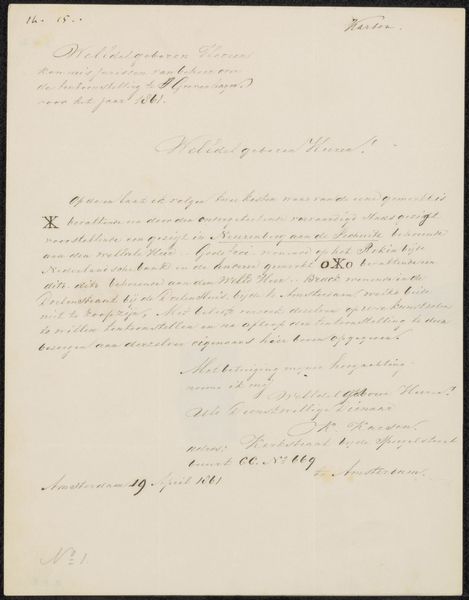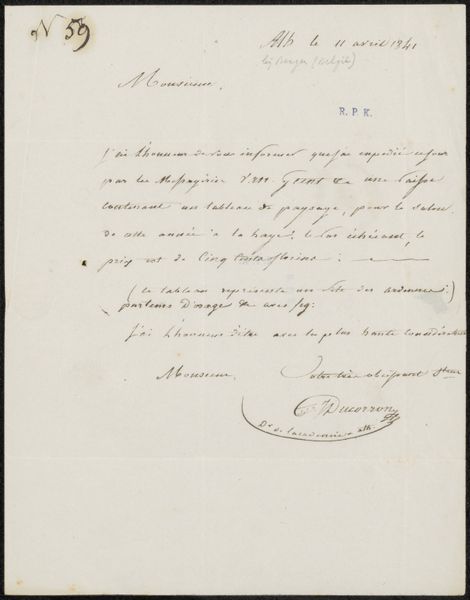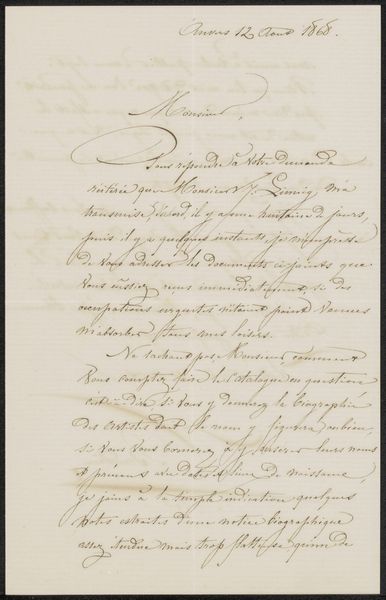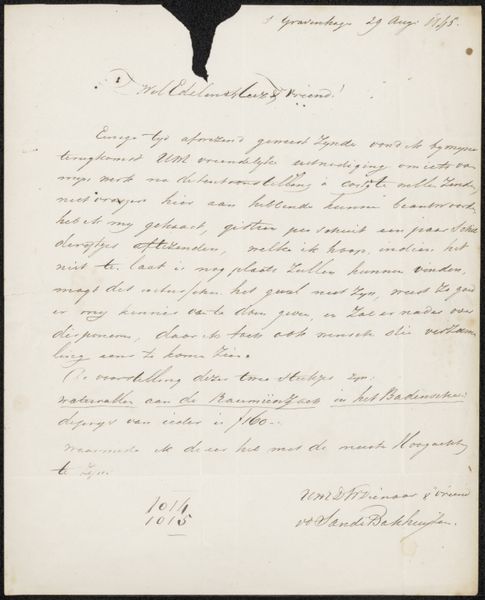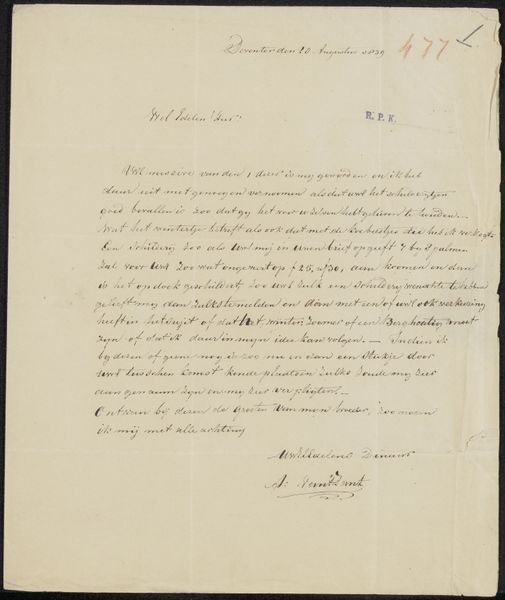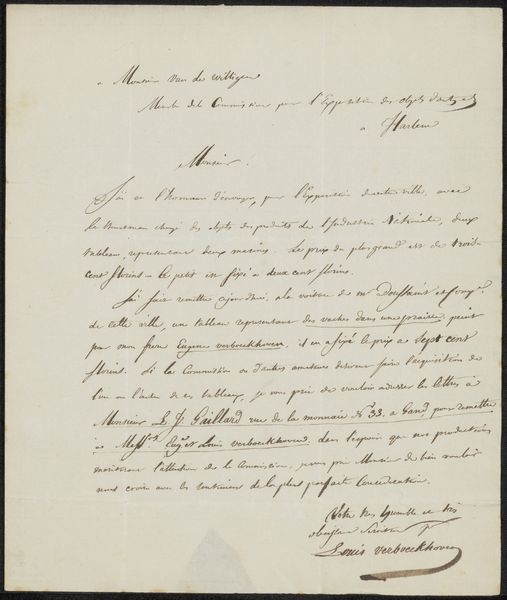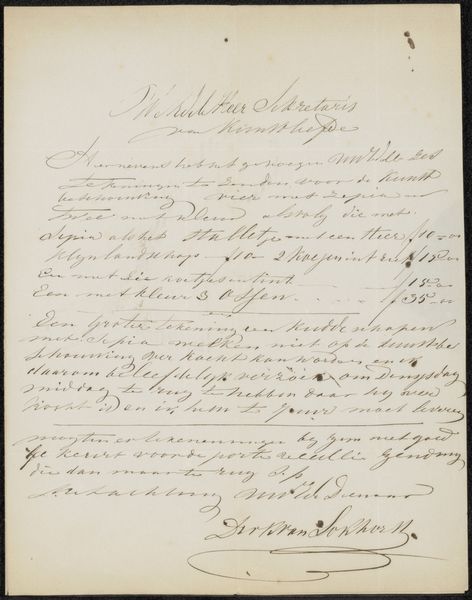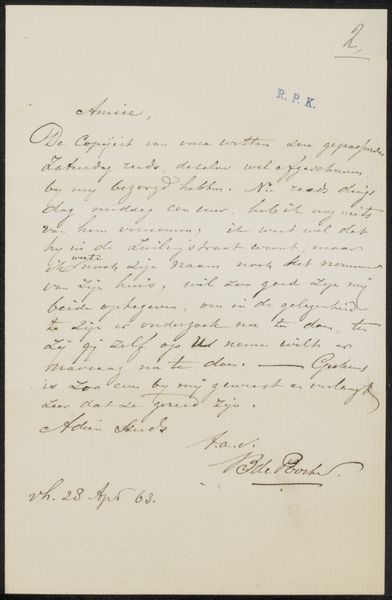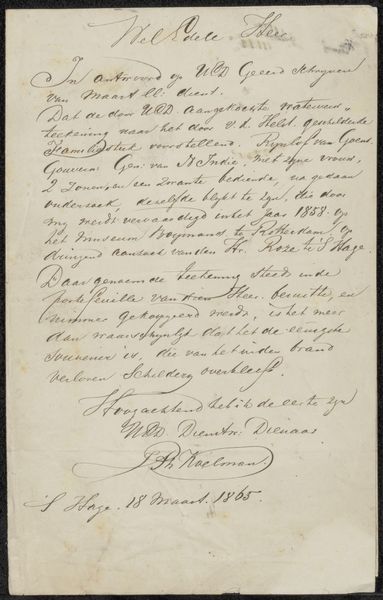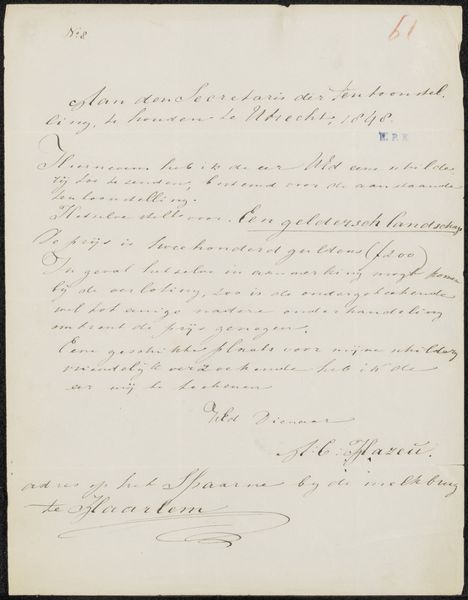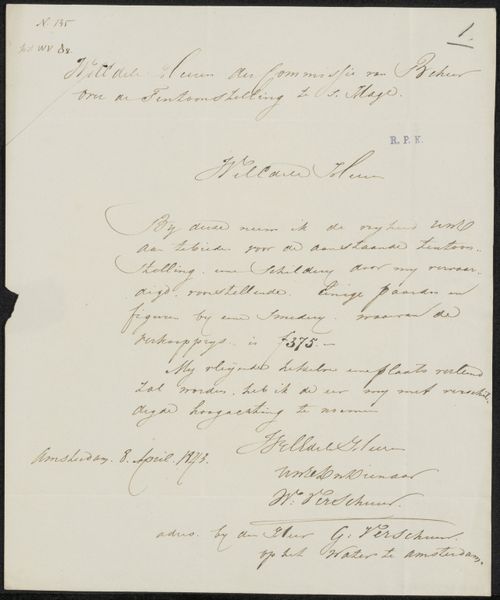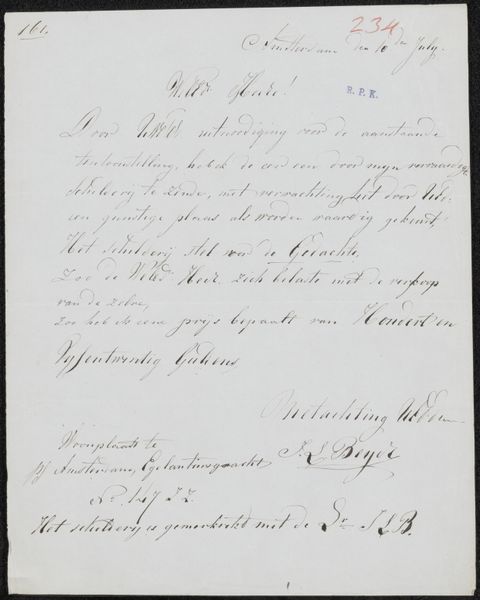
Brief aan de Commissie van de Tentoonstelling van Levende Meesters in Haarlem Possibly 1825 - 1826
0:00
0:00
drawing, paper, ink, pen
#
drawing
#
hand-lettering
#
dutch-golden-age
#
ink paper printed
#
hand drawn type
#
paper
#
personal sketchbook
#
ink
#
hand-drawn typeface
#
ink drawing experimentation
#
pen-ink sketch
#
pen work
#
sketchbook drawing
#
pen
#
sketchbook art
#
calligraphy
Copyright: Rijks Museum: Open Domain
Editor: So, this is "Brief aan de Commissie van de Tentoonstelling van Levende Meesters in Haarlem," likely from 1825-1826 by Adalbertus Engelsmet. It's an ink drawing on paper. I find it fascinating how it offers a direct, unfiltered glimpse into the art world of the time. What catches your eye in this piece? Curator: It speaks volumes about the relationship between artist and institution, doesn’t it? It highlights the artist's attempt to engage with a system that, historically, has often marginalized those outside its established circles. Consider the act of writing itself – a deliberate assertion of voice and agency. How does this gesture resonate within the context of art history and social hierarchies of the 19th century? Editor: It seems like he's trying to negotiate entry, almost pleading his case. The listed prices add another layer. Curator: Precisely. The inclusion of pricing suggests a market-driven reality clashing with artistic ambition. It forces us to consider how economic factors intersect with creative expression and the politics of display. Where do you think he positions himself in the letter? Is he confident, or is there insecurity showing? Editor: I think there's some vulnerability there, trying to balance artistic merit and marketability. But I'm intrigued by the date. What social conditions of the 1820s do we see reflected? Curator: We see a period grappling with the aftershocks of revolution, industrialization, and shifting class structures. Artists were navigating new terrains of patronage and exhibition culture, all the while renegotiating their position within a changing society. How might Engelsmet's letter be seen as a document reflecting these larger transformations? Editor: It's almost a miniature case study of the artist’s struggle, playing with those elements in his life and work. Curator: Absolutely, and in analyzing that we start seeing bigger systems and themes within just this small sketch. Editor: Thanks, it gave me a lot to think about the politics embedded in something seemingly so simple!
Comments
No comments
Be the first to comment and join the conversation on the ultimate creative platform.
